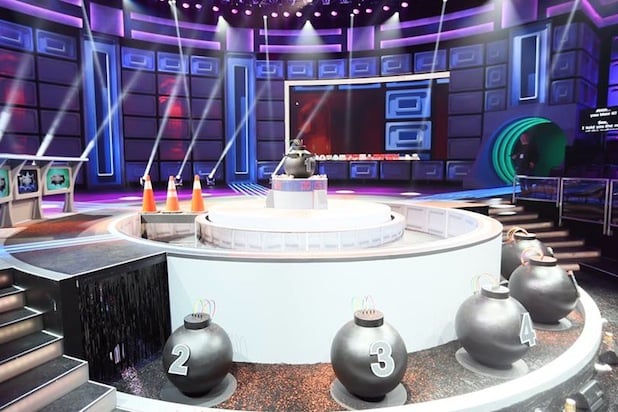 DMX (Digital Multiplex) is a digital network communication standard, mostly used to control lighting equipment. With the versatility of the standard making it increasingly popular in other applications, it's time to learn about DMX, and how to avoid potential pitfalls using it!
DMX (Digital Multiplex) is a digital network communication standard, mostly used to control lighting equipment. With the versatility of the standard making it increasingly popular in other applications, it's time to learn about DMX, and how to avoid potential pitfalls using it!
This article will cover the following topics:
- What is DMX/DMX512?
- The history of DMX
- What are some limitations of DMX?
- What is the network topology of DMX512?
- DMX physical layer – connectors and wires
- DMX Protocol
- How can I avoid DMX pitfalls?
- Further reading
What is DMX/DMX512?
DMX (Digital Multiplex) is a digital network communication standard, most commonly used in the lightning world, to control lighting equipment such as dimmers, moving heads and effects devices (such as fog machines). The digits 512 refer to the number of channels a single DMX can control.
Initially, DMX was developed to be a standardized system to control light dimmers, but has evolved and is now used in a wide range of applications. DMX can be used to control almost anything – from Christmas lights to LED walls.
The history of DMX
The DMX512 standard was developed by the Engineering Commission of United States Institute for Theatre Technology (USITT) in 1986. Since then it has undergone several revisions, and in 1990 it became USITT DMX512/1990.
The process to turn the DMX512 standard into an ANSI (American National Standards Institute) standard began in 1998. The organization behind the standardization work was Entertainment Services and Technology Association (ESTA) which merged with Professional Lighting and Sound Association (PLASA) in 2010.
In November 2004, the ANSI-revised standard, known officially as "Entertainment Technology—USITT DMX512-A—Asynchronous Serial Digital Data Transmission Standard for Controlling Lighting Equipment and Accessories", was approved by the American National Standards Institute.
A revision was made in 2008, resulting in the current standard known as "E1.11 – 2008, USITT DMX512-A", commonly referred to as "DMX512-A".
When DMX was first developed, there was no need for more than 512 control channels. But the world does not stand still, and new products have since been released with broader and more challenging requirements. Fixtures such as moving heads require multiple channels of DMX to control them, and to drive these new devices, multiple runs of DMX are needed. The term “DMX universes” was born.
What are some limitations of DMX?
While DMX is an incredibly versatile and reliable technology, the DMX512 standard does not include automatic error checking and correction. That results in several limitations, and DMX is not appropriate control for applications such as pyrotechnics.
DMX can also be exposed to false triggering of actions, caused by using poor quality cables, electromagnetic interference, static electricity discharges, poor cable termination or simply very long cables.
What is the network topology of DMX512?
A DMX512 network is a multi-drop bus topology with different nodes in what is commonly referred to as a daisy chain. On the network, you will have a single DMX512 controller (the master of the network) and one or more slave devices. For example, a lighting console is typically the controller for a network of slave devices such as dimmers, fog machines, moving heads and other units supporting DMX.
The slave devices have one DMX input connector, and most often an output or throughput connector. The controller is connected via a DMX512 cable to the input of the first slave, and a second cable links from output or throughput of the first slave to the next slave in the daisy chain – and so it goes on.
DMX physical layer – connectors and wire
The data transmitted across the network, on a network wired by shielded twisted pair, is digitally sent as 8-bit binary data. The 8-bit data represents a maximum of 256 values, from 0 to 255). In the binary number system, the numbers are formatted as 00000000 (zero) up to 11111111 (255).
The binary data is transmitted using EIA-485 voltage levels, and the DMX512 specifications are identical to those of the EIA-485-A standard, with a few exceptions.
DMX512 is a bus network with a maximum length of 1200 metres (3900 feet), limited to 32 units on a single bus. When building DMX infrastructure with more than 32 units, the network can be expanded using DMX splitters.
In the original DMX512 standard, the connectors were five-pin XLR style electrical connectors (XLR-5), with female connectors for transmitting and male connectors for receiving. In the revised standard, DMX512-A, approved the use of eight-pin modular (8P8C, better known as "RJ-45") connectors for fixed installations where regular plugging and unplugging of equipment is not required.
Other form-factor connectors are permitted on installations where neither XLR nor RJ-45 are not suitable – this is also limited to fixed installations.
DMX512 Protocol
A DMX512 controller transmits asynchronous serial data: one start bit, eight data bits, two stop bits and no parity, and the packet looks like this:
- Break condition
- Mark-After-Break
- Slot 0, containing the one-byte Start Code
- Up to 512 slots of channel data, each containing one byte
The first slot (0) is reserved for a value that specifies the type of data the packet contains. It can be 0x00, which is the standard value used for all DMX512 compatible devices. Other start codes are used for Text packets (0x17), System Information Packets (0xCF), for the RDM extension to DMX (0xCC), and various proprietary systems.
For further in-depth reading on the DMX topology, network and protocol, I recommend DMX demystified, by Michael Cassera.
How can I avoid DMX pitfalls?
With a daisy-chained data network in a bus topology without error checking and correction, you will inevitably run into problems. However, most of the installation problems are caused by bad cabling (length and quality) or electromagnetic (interference and static discharges).
The following list is based on the excellent work by Ujjal Kar. Read his full article Problems using DMX512 for more in-depth information.
- Get a DMX512 test unit. This is absolutely essential and will help you to identify and detect errors.
- Use proper cables. Microphone balanced line cables are NOT suitable for DMX512 work.
- Check each cable before installation.
- Be careful about receivers using three-pin DMX512, as you may need to use five-pin XLR to three-pin XLR conversion cables with reversed phase. If you deal with a rental company, ask what they will provide and read the user´s manual to check.
- Check the receiver's earth pin scheme. Use a continuity tester or multi-meter to check whether there is continuity between PIN 1 and the chassis. If there is continuity, you must use a DMX isolator between the unit and the rest of the chain. Only the console should have its output ground connected to the chassis.
- Use good connectors. Any loose connector can cause problems.
- Terminate the DMX chains. Unless the last unit has a built-in termination facility, you need a termination plug.
- Calculate your DMX loading and use line drivers/splitters if needed. A best practice can be to plan your DMX512 runs manufacturer-wise, using a splitter and put units belonging to each manufacturer on each splitter leg ending with a terminator.
- Plan your address setting carefully. Note that some fixtures use different formats for DIP switch settings.
- Avoid running DMX cables parallel to power cables and dimmer load cables.
- Read the user manual of the products you will use! It has never hurt anyone to read a manual.
Sources and recommended reading
If you want to dig down into the more technical details of DMX, I highly recommend DMX Demystified, written by Michael Cassera, published at TheatreArtLife.com, as well as Ujjal Kars fabulous collection of know-how on DMX. Their work on DMX was a big inspiration to this post. And the Wikipedia DMX512 page – of course.
- Wikipedia
- Michael Cassera, https://theatreartlife.com/staying-still/dmx-demystified/
- Ujjal Kar, http://www.dmx512-online.com/whats.html
- Elationlightning, A DMX 101 handbook
Photo: Photo from Boom! Game Show, an installation using DMX and WATCHOUT.





